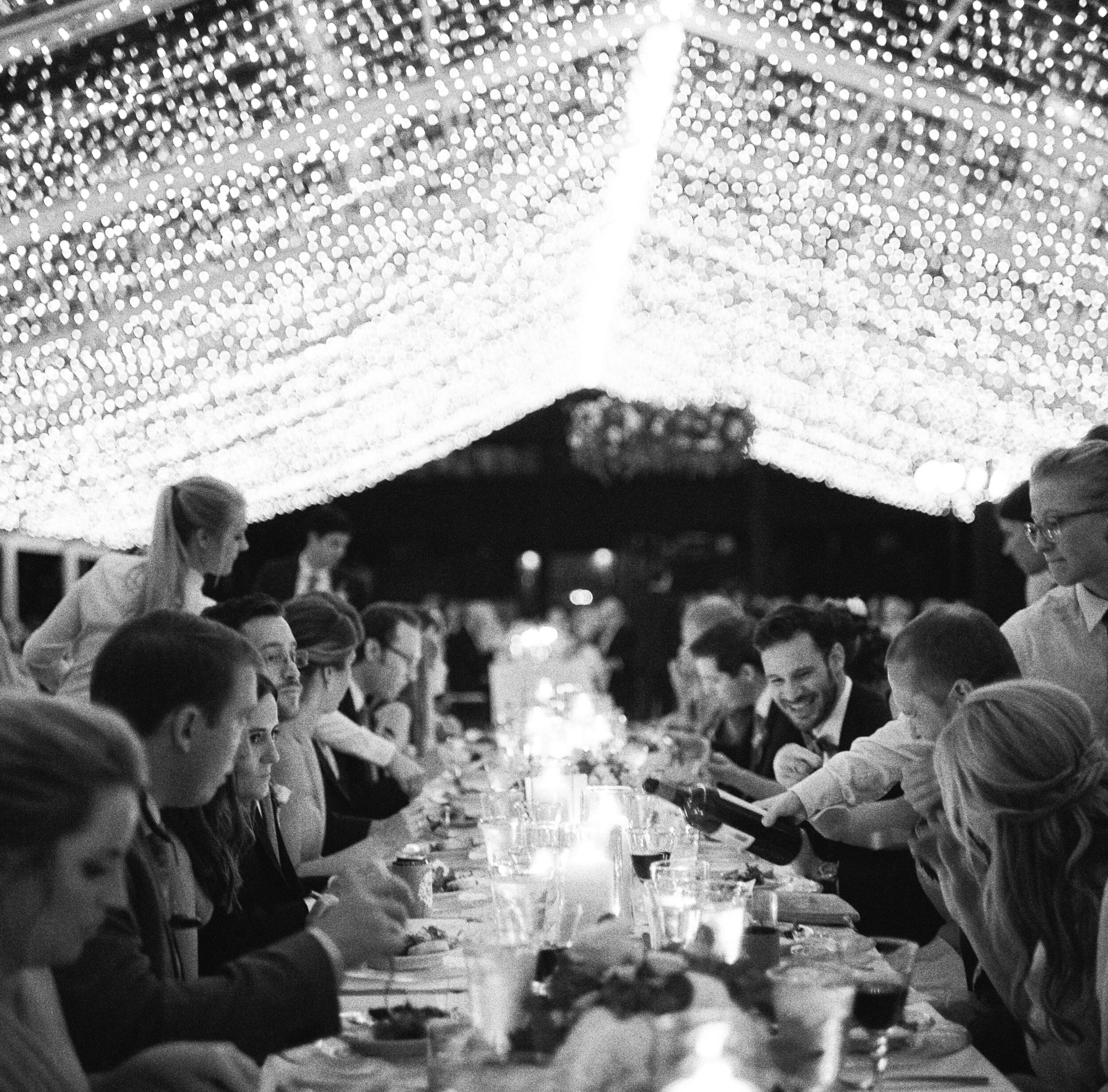The A List: Creating Your Guest List
Vendors:
Whitney Neal Studios
Polo Barn at Saxony Farm
Suzi HJorth
Apiary Fine catering
All occasions Event rentalThe very first thing to be addressed when you start planning your wedding is budget. Nobody likes to think about money, but the truth is your budget will have a major effect on the kind of wedding you have.
The biggest factor in a wedding budget is the Guest List. Every person must have a chair, a place setting and be fed. Every table of 8-10 equals another linen, floral arrangement, and possibly additional catering staff.
After you create a realistic budget, the next step is to select your venue. The capacity of the space determines how many people you can invite. You should also consider the level of intimacy you desire for the event. Needless to say, a crowd of 250 people is not going to allow for a cozy, intimate affair.
Now it’s time to sit down with your fiancé and both sets of parents (or whoever is contributing to the budget) to set ground rules for a potential guest list.
Setting up a hierarchy may help:
Family
Close friends
Friends, co-workers, family friends
“Would be nice” - ie. distant relatives, old friends, etc.
If the guest list becomes inflated, start making cuts from the bottom up. You might think about eliminating entire groups – like co-workers, gym buddies, or your book club – to avoid hurt feelings. When you’re on the fence, consider the one-year rule: have you seen or spoken to the person in the last year? One of our clients who wanted a small, intimate dinner party feel even narrowed it down to people she had dinner with over the past month!
A frequent question is how many guests should each family invite. This can be a touchy subject, particularly when the wedding is being paid for entirely by one family.
Traditionally, each family gets half the guest count. A simple way to do this is to have four working lists: one for each sets of parents, and two for the couple. Then, you can combine these into a master list.
Ultimately, the couple will make the tough decisions – and they should, because it’s their wedding. But for the sake of fairness and harmony, they should sincerely take into account the wishes of the family hosting the wedding.
Two last things to consider when putting together a guest list, is “plus one” and children. Decide early on if children will be invited. If so, the environment needs to be child friendly, and remember that the children will be included in the head count that goes to the caterer, and often will still need a seat at a table.
For “plus one,” make a decision and stick to it. My advice is that if a guest is in a long-term relationship, invite that special person. If you want to leave it open for Jim to bring a date, address the invitation to “Mr. James Smith and Guest,” and make that option available to all single guests.
As your RSVP’s start coming in, generally assume 20 percent will decline; however, I have certainly seen this rule broken. We’ve had weddings of 200 where the couple only received 10 no’s! Once you receive a few no’s, decide whether to move to the B list (people you would like to invite if the guest count allows).
If there’s one thing I can say about every wedding, it’s that you will be worn out by the time the whole thing is over. There’s a lot of anticipation, you may not sleep well the night before, you’ll be getting up early, and the day is long. At the reception, you will want to mingle with your guests, talk to each one, and enjoy having them there to celebrate with you. It would be nice if each and every person were there because they are special in your life and mean a lot to you.



